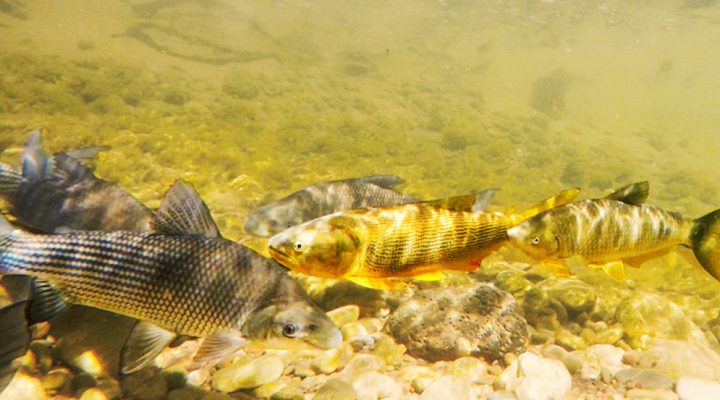BIOLOGICAL AND HEALTH SCIENCES
Researchers analyze the effects of a protected area on the recovery of three species of fishing interest
The work was carried out by CONICET specialists who study the role of El Rey National Park (Salta) in the protection of fish populations attractive for tourist activity.
CONICET specialists analyzed the effects of the protection of El Rey National Park on the populations of dorado (Salminus brasiliensis), tarpon (Prochilodus lineatus) and boga (Megaleporinus spp.), three species of fishing interest. The work was carried out in the Popayán River (within and on the limits of the National Park), part of the Bermejito River basin, and was led by Alejo Irigoyen, researcher of the Council at the Centro para el Estudios de Sistemas Marinos (CESIMAR, CONICET). Gastón Trobbiani and Agustín De Wysiecki, from the same Institute, worked alongside him; Gastón Aguilera, Guillermo Terán and Baltasar Bugeau, from the Lillo Execution Unit (UEL, CONICET-FML); Felipe Alonso, from the NOA Institute of Bio and Geosciences (IBIGEO, CONICET-UNSa), and Miguel Casalinuovo, who died on July 16, 2022.
“The work was proposed by Felipe Alonso, who is an ichthyologist from Salta, and a CONICET research team in Tucumán. The idea was to take our specialty, which is the estimation of abundance and size of fish in the sea with non-destructive observation methods, to the rivers of the Yungueña jungle of Salta, which have clear water,” explains Alejo Irigoyen. The method used by CESIMAR scientists consists of a ‘visual census’, which they have been practicing in the sea for about 20 years, using diving: “Transects are made where one counts and estimates the size of the fish in a certain area. So, we know how many there are and what size,” completes the specialist.
In July 2022, visual censuses of dorado, bogas and tarpon were carried out in pools in three different areas: a protected area with no recorded poaching activity, a protected area with recorded poaching activity and an unprotected area with recorded poaching activity. In each well, the abundance of each species, maximum depth and its length were recorded.
The data analysis indicated that the abundance of the three species was lower in areas with poaching or unprotected areas than in the protected area without poaching, representing a decrease of 74% in dorado, 58% in bogas and 45% in shad, while that the size of the dorado was much larger in the protected area. “Thanks to joint work with the national park rangers, we registered a very good situation within a sector of the park, where we found large female dorado, which possibly support the entire population, and, on the other hand, a situation outside of exploitation. recreational and also poaching fishing, where populations are very depressed. There is a brutal contrast from the limits of the national park up or down, which is where people have access to fish.”
According to the authors, freshwater species and habitats are among the most threatened in the world. In this context, protected areas (PAs) are a classic tool to protect both ecosystems and species and the natural and cultural heritage they contain. However, in continental areas, PAs are mostly established on terrestrial conservation values, while protection of aquatic and fish environments is casual.
This information allows experts to affirm that the management of the study species inside and outside the El Rey National Park represents a challenge, given the small size of the river sector where the fish populations are well conserved, especially all of breeding adult goldfish. If poaching could be avoided, this factor would lead to the rapid recovery of, at least, the sectors of the river studied. The current situation, in addition to the environmental liability and the risk of having low-density populations and few reproducers, can be considered a social liability given the economic activity that recreational fishing could generate. “Something about dorado, for example, is that it is a species that attracts a lot of foreign tourism, many companies are dedicated to bringing people to fish for dorado, it is an emerging economy. So we talk not only about the care of the natural and cultural heritage that is this species, but also that they are very profitable economies that help the local people if they are done properly.”
By Santiago Giorgi – Área de Comunicación CONICET CENPAT
References
Irigoyen, A. J., Trobbiani, G., De Wysiecki, A. M., Aguilera, G., Terán, G., Bugeau, B. H., Casalinuovo, M., & Alonso, F. (2023). Efecto del Parque Nacional El Rey y de una crecida sobre peces de interés pesquero en un río subandino del noroeste de la Argentina. Ecología Austral, 33(3), 909–922. https://doi.org/10.25260/EA.23.33.3.0.2168DOI: https://doi.org/10.25260/EA.23.33.3.0.2168
